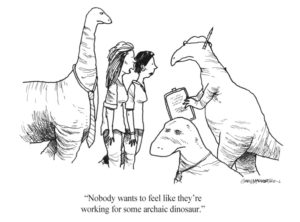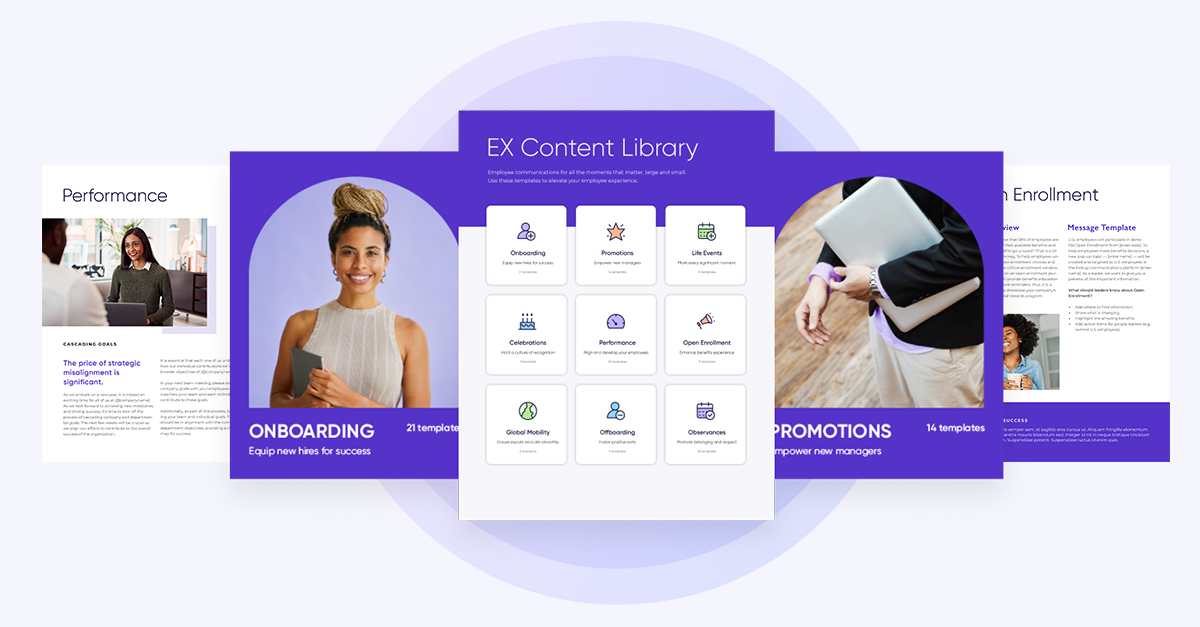Here’s a fun fact that many in the business world might not know: The Millennial generation became the largest segment of the workforce in 2016. In fact, that figure will climb to 75 percent by 2030.
Millennials aren’t taking over the workplace. They’ve already taken over.
OK, now here’s a not-so-fun fact. Organizations are still struggling to figure out how to communicate with this huge segment of workers. And that’s a costly problem.
“When a young employee finds that an organization doesn’t communicate the way they’re accustomed to, they can more easily become disengaged and end up leaving,” said Elaine Branding, Senior Vice President and Partner, FleishmanHillard. “Generally, Millennials don’t plan on staying at a place for a long time if they’re not happy. So, don’t stay up-to-date with current communication practices at your own peril. The world will move on and your employees may, too.”

Companies do understand the challenge they’re facing, said Chip Espinoza, author of “Managing the Millennials.” His contention is that they’re just not addressing it adequately.
“The No. 1 question I get about managing Millennials is communication,” Espinoza added. “There’s a sense of frustration because leaders do realize there has been a breakdown. But a lot of the problem gets projected on the young professional. Companies are abdicating their own responsibility to try to fix that. The people with the most responsibility have to be the ones willing to adapt. When leaders don’t do that, there’s failure.”
Millennials, according to the Pew Research Center, are people who were born between 1981 and 1996. Organizations often expect this block of employees to interact with company information in the same exact way that older generations do, but that ignores the reality of how the world has profoundly changed due to advances in technology used in our everyday lives.

For example, mobile devices have become virtual remote controls in how we all view the world. Sure, that’s true of everyone, but it’s especially the case for younger workers who were raised with digital technology. For example, one study found that 25 percent of Millennials spend at least five hours a day on their smartphones.
So, any employee communication strategy that doesn’t include delivering personalized information to employees wherever they are on those devices is way behind the times. It’s also doomed to failure.
“It can be a culture shock if Millennials find themselves in a really controlled environment for communication and maybe can’t even use their cell phones,” said Cat Graham, Founder, Employee Communications Leader, Culture Hacker, Inclusion Champion at Cheer Partners. “Yes, they may have to learn how to use company authorized tools, but the challenge is also to engage them on those tools. Organizations also should be inviting them to show how things can be done better. This is an opportunity for Millennials to reverse mentor communication trends because they are much closer to the pulse of technology changes.”
Millennials already are a dominant force inside organizations today. But if companies don’t connect with them in the way they want, something else will happen. They will be walking right back out the door.
High-context communications
Earlier this year at the Attune Summit, keynote speaker Malcolm Gladwell gave some incredible insights into the importance of high context communication in the workplace, and how this is being influenced by this growing millennial workforce.
“You have to be able to have a conversation that reaches people, that seems real. That seems like it’s consequential, and intentional, and deliberate.”
— Malcolm Gladwell, Bestselling Author/Journalist
As we mentioned, 75% of the world’s workforce will be millennials by 2030. The consequence of this generational shift means that as leaders we need to be thinking about engagement in different ways. Those from the ‘baby boomer’ generation are likely to be more used to the traditional hierarchical structure – a decision is made, and then it’s cascaded to the workforce for execution – no questions asked.
Millennials do not work on this hierarchical basis. Everything that they are involved in and motivated by works on a network basis, where power is decentralized, actions are flexible, and there is a staggeringly high level of engagement – where each individual can be part of the conversation. As a result, there is an expectation that they will also have a voice in the workplace.
Leaders who are used to the traditional hierarchical structure may feel anxious at the network approach of inviting the workforce into the conversation, for fear of not being able to execute effectively to deliver on strategy and shareholder value. But, in order for our new workforce to truly be motivated and productive, they need to feel part of the conversation.
With this network model also comes an expectation of high context communication, where leaders act with feeling and empathy so people feel they are truly being heard. This may be daunting for some leaders, as high levels of EQ have not been as necessary in the past.
Of course, we cannot run businesses where every decision is debated and changed at will across the network, but we do need to embrace a network-hierarchy hybrid model. Here are a few quick tips:
- Take time to understand where this new generation of employees are coming from. That means understanding their needs, what motivates them, and thinking about how we can help them to feel connected to the purpose of the company and their role.
- Get rid of the “casual contempt” of those who operate on a different paradigm. After all, it is those that endeavor to learn from those who think differently from them that are often the most successful.
- Take the time to target and personalize your communications, and ensure the delivery is meeting employees where they are, in their language and in a way that will resonate with them.
- Own your own narrative – and then share it. Employees need to hear news from leaders first – not via the grapevine or third parties. Make sure there are opportunities to listen and respond in the process.
- Democratize communications. In a network, communications does not always have to come from the top – power is pushed out to the edges, and therefore there is a fantastic opportunity for all types of leaders, managers and influencers in an organization to play a much bigger role.
Listening to employees and engaging them in the business conversation – ensuring that employees feel a sense of belonging and ownership — is at the very heart of what our platform delivers at Firstup. Every employee, regardless of location, shift type, tenure or level should be connected to and supported by their employer and have a digital employee experience that works for them.





